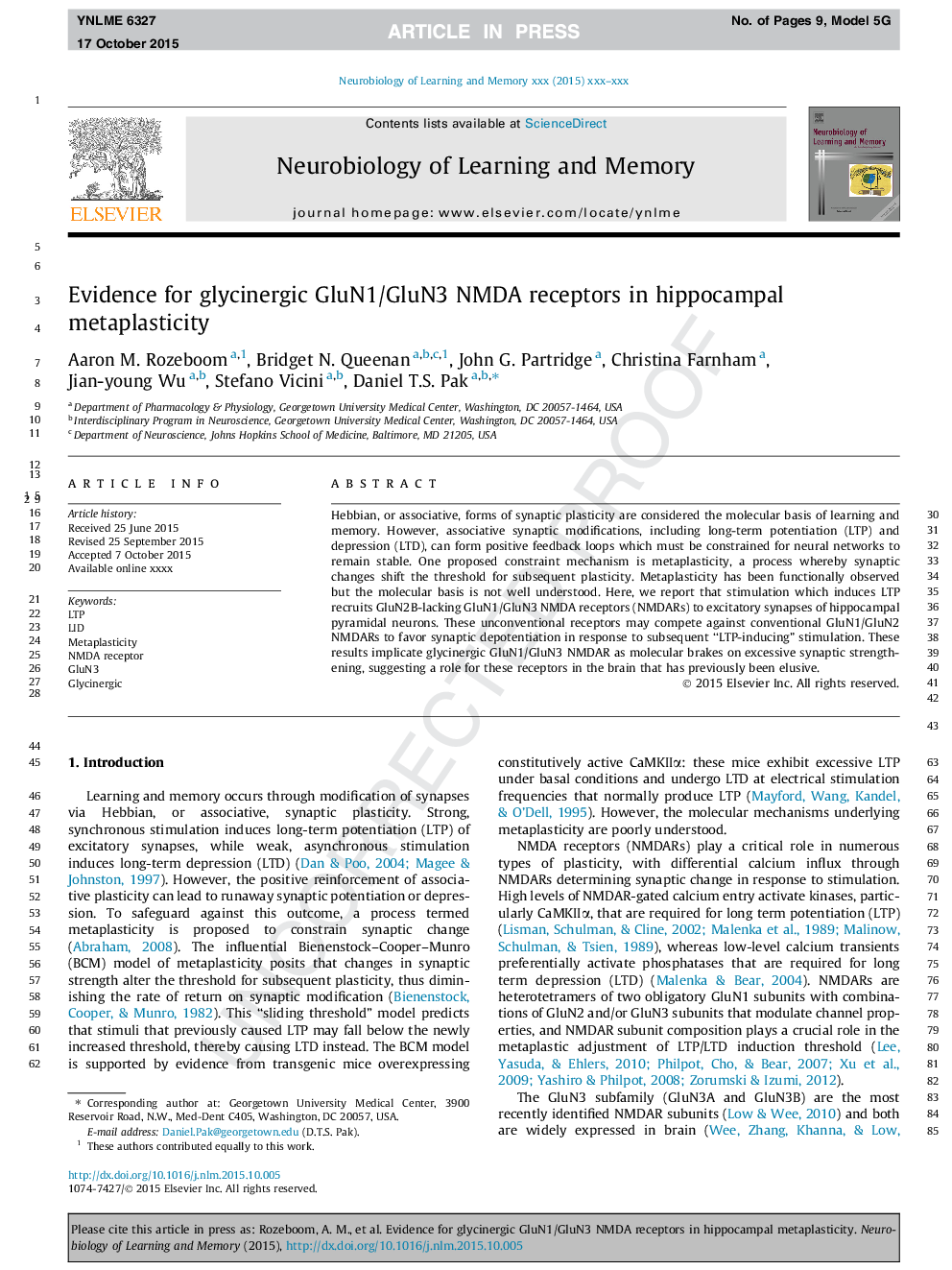| Article ID | Journal | Published Year | Pages | File Type |
|---|---|---|---|---|
| 7299404 | Neurobiology of Learning and Memory | 2015 | 9 Pages |
Abstract
Hebbian, or associative, forms of synaptic plasticity are considered the molecular basis of learning and memory. However, associative synaptic modifications, including long-term potentiation (LTP) and depression (LTD), can form positive feedback loops which must be constrained for neural networks to remain stable. One proposed constraint mechanism is metaplasticity, a process whereby synaptic changes shift the threshold for subsequent plasticity. Metaplasticity has been functionally observed but the molecular basis is not well understood. Here, we report that stimulation which induces LTP recruits GluN2B-lacking GluN1/GluN3 NMDA receptors (NMDARs) to excitatory synapses of hippocampal pyramidal neurons. These unconventional receptors may compete against conventional GluN1/GluN2 NMDARs to favor synaptic depotentiation in response to subsequent “LTP-inducing” stimulation. These results implicate glycinergic GluN1/GluN3 NMDAR as molecular brakes on excessive synaptic strengthening, suggesting a role for these receptors in the brain that has previously been elusive.
Related Topics
Life Sciences
Neuroscience
Behavioral Neuroscience
Authors
Aaron M. Rozeboom, Bridget N. Queenan, John G. Partridge, Christina Farnham, Jian-young Wu, Stefano Vicini, Daniel T.S. Pak,
